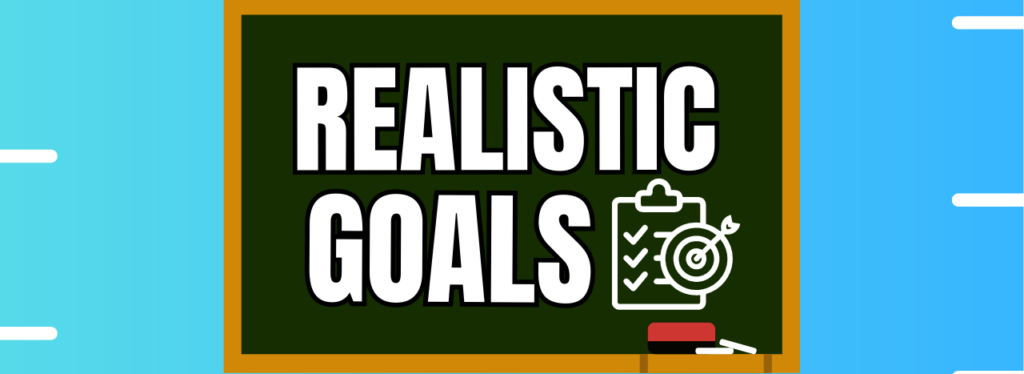Are you ready to embark on a transformative journey towards achieving your weight loss goals? Setting clear and well-defined goals is the foundation of any successful weight loss endeavor. Knowing how to set weight loss goals effectively can empower you to make tangible progress and experience phenomenal results. By understanding the key principles and strategies behind goal setting, you can pave the way for a successful and fulfilling journey towards a healthier, happier you. In this guide, we will dive into the essential steps and insights on how to set weight loss goals that will fuel your motivation, focus your efforts, and ultimately lead you to remarkable success. Get ready to empower your journey and unlock the potential within you.
When you set realistic goals, you’re more likely to stay motivated, make sustainable lifestyle changes, and achieve lasting weight loss results. In this article, we’ll explore the importance of setting realistic goals for long-term weight loss and provide tips for how to do so.
Why Set Realistic Goals?
Setting realistic goals is critical for long-term weight loss success for several reasons. First, unrealistic goals can lead to frustration and discouragement when you don’t see the results you expected. This can lead to giving up or resorting to unhealthy behaviors like crash dieting or excessive exercise.
On the other hand, setting realistic goals can help you stay motivated, make sustainable lifestyle changes, and celebrate small wins along the way. Realistic goals are achievable and help you establish healthy habits that you can maintain for the long-term. This is important because losing weight and keeping it off requires a lifestyle change, not a quick fix.
How to Set Weight Loss Goals
Firstly, take some time to reflect on your motivation behind wanting to lose weight. Understanding why you want to make this change will help you stay focused and committed throughout the process. Whether it’s improving your health, boosting confidence, or enhancing overall well-being, clarifying your motivation will provide the foundation for your goals.
How to Set Weight Loss Goals: When setting weight loss goals, it’s important to make them specific. Avoid vague goals like “lose weight” and be clear about what you want to achieve. For example, aim to lose a certain number of pounds or inches within a specific timeframe. Specific goals provide a target to work towards and allow you to measure your progress effectively.
While it’s great to aim high, it’s essential to set realistic and achievable targets. Consider your current lifestyle, commitments, and capabilities. Setting overly ambitious goals can lead to frustration and demotivation if they are unattainable. Be honest with yourself and set goals that are challenging yet within reach.
To make your weight loss goals more manageable, break them into smaller milestones. These milestones serve as checkpoints along your journey, allowing you to celebrate progress and stay motivated. For instance, aim to lose a certain amount of weight per month or achieve specific fitness milestones. Breaking down your goals will make the process feel less overwhelming and provide a sense of accomplishment along the way.

Use the SMART System for Setting Weight Loss Goals
Consider using the SMART (Specific, Measurable, Achievable, Relevant, Time-bound) framework when setting your weight loss goals. Ensure your goals are specific, measurable, attainable, relevant to your overall objective, and have a clear timeline for completion. The SMART framework provides structure and helps you create goals that are well-defined and actionable.
Tracking your progress is essential for staying accountable and motivated. Keep a record of your weight, body measurements, and other relevant indicators. Regularly reviewing your progress will allow you to see how far you’ve come and make any necessary adjustments to your approach if needed. Tracking also provides valuable data for assessing what is working and what might need modification.
Regular Exercise: How to Set Weight Loss Goals
Incorporating healthy lifestyle changes alongside your weight loss goals is vital. Focus on adopting regular exercise, balanced nutrition, and adequate sleep. These lifestyle changes will support your weight loss efforts and contribute to your overall well-being. Remember, weight loss is not just about numbers on a scale but about improving your overall health and well-being.
If you feel uncertain about setting weight loss goals or need personalized advice, consider consulting a healthcare professional or a registered dietitian. They can provide expert guidance and help you create a tailored plan based on your unique needs and circumstances. Their expertise will ensure that your goals are realistic, safe, and aligned with your overall health objectives.
Throughout your weight loss journey, it’s essential to stay flexible and adjust your goals as necessary. Recognize that there may be ups and downs along the way. Be willing to adapt your goals if circumstances change or progress is slower than anticipated. Embrace the journey, learn from the challenges, and be open to modifying your approach when necessary.
By considering these aspects and following the guidance on how to set weight loss goals, you can create a clear roadmap towards achieving your desired results. Remember to stay committed, stay patient, and believe in yourself. Your journey to a healthier you starts with setting the right goals.
Do’s and Don’ts: How to Set Weight Loss Goals
Dos
- Set achievable weight loss goals.
- Break goals into smaller steps.
- Make gradual lifestyle changes.
- Monitor progress regularly.
- Celebrate successes.
- Seek support from friends or professionals.
Don’ts
- Avoid extreme weight loss goals.
- Avoid crash diets.
- Don’t compare yourself.
- Avoid giving up after setbacks.
- Do not rely only on the scale.
- Avoid negative self-talk or unrealistic expectations.
Tips for Setting Realistic Goals
Now that we understand why setting realistic goals is important for long-term weight loss success, let’s explore some tips for how to do so.
Be Specific for How to Set Weight Loss Goals
When setting goals, it’s important to be specific about what you want to achieve. Instead of setting a general goal like “lose weight,” make it specific by setting a target weight or a specific amount of weight loss per week or month. This helps you stay focused and gives you a clear target to work towards.
Make it Measurable: How to Set Weight Loss Goals
In addition to being specific, goals should also be measurable. This means that you should have a way to track your progress and measure your success. For example, if your goal is to lose 10 pounds, you can track your weight loss progress each week to see how close you are to achieving your goal.
Set a Realistic Timeline
Setting a realistic timeline is important for ensuring that your goals are achievable. Losing weight too quickly can be unhealthy and unsustainable, while losing weight too slowly can be discouraging. A safe and realistic rate of weight loss is 1-2 pounds per week.
This may vary depending on your individual circumstances, so be sure to consult with a healthcare provider or registered dietitian to determine a safe and realistic timeline for your weight loss goals.
Focus on Non-Scale Victories
While weight loss is an important goal, it’s not the only measure of success. Focusing solely on the number on the scale can be discouraging and may not accurately reflect your progress. Instead, focus on non-scale victories like improved energy levels, better sleep quality, and increased strength and endurance. Celebrating these wins along the way can help you stay motivated and on track with your weight loss journey.
Be Realistic and Patient for How to Set Weight Loss Goals
Finally, it’s important to be realistic and patient when setting weight loss goals. Losing weight and keeping it off takes time, and it’s important to be patient with yourself along the way. Don’t expect overnight results, and don’t beat yourself up if you experience setbacks or plateaus. Remember that weight loss is a journey, not a destination, and focus on progress rather than perfection.
Conclusion and final thoughts 💭
In conclusion, setting realistic goals is crucial for long-term weight loss success. Be specific, measurable, and set a realistic timeline for achieving your goals. Focus on non-scale victories, and be patient with yourself along the way.
Remember that weight loss is a journey, and celebrate small wins along the way. With commitment and consistency, you can achieve your weight loss goals and live a healthier, happier life.
FAQ: How to Set Weight Loss Goals
Why is setting weight loss goals important?
Setting weight loss goals provides a clear direction and purpose for your journey. Goals help you stay motivated, track progress, and make necessary adjustments along the way. They provide a roadmap towards achieving your desired weight and a healthier lifestyle.
How do I determine my weight loss goals?
Reflect on your motivation for losing weight. Consider factors such as health, appearance, and overall well-being. Set specific, measurable, attainable, relevant, and time-bound (SMART) goals. For example, aim to lose a certain amount of weight within a specific timeframe or fit into a particular clothing size.
Should I set short-term or long-term weight loss goals?
It’s beneficial to set both short-term and long-term goals. Short-term goals help you focus on immediate targets and provide a sense of accomplishment. Long-term goals keep you motivated and provide a broader vision of your desired outcome. Breaking long-term goals into smaller milestones can make them more achievable.
How do I make my weight loss goals realistic?
Set realistic goals by considering your current lifestyle, commitments, and capabilities. Goals should challenge you without being overly ambitious or unsustainable. Consult with healthcare professionals or registered dietitians for personalized guidance in determining realistic goals.
Can I modify my weight loss goals if needed?
Yes, it’s important to be flexible and open to adjusting your goals. Regularly assess your progress and make modifications if necessary. Stay focused on the overall objective while allowing room for adaptation.
How do I track my progress towards my weight loss goals?
Track your progress through methods like regular weigh-ins, body measurements, food journals, or fitness tracking apps. Reviewing data helps you assess what is working and identify areas that may require adjustments in your approach.
Should I seek professional guidance for setting weight loss goals?
Consulting healthcare professionals or registered dietitians can provide valuable guidance. They offer expert advice based on your individual needs, health conditions, and lifestyle factors. Professional guidance ensures your goals are safe, realistic, and aligned with your overall health objectives.
How do I stay motivated while working towards my weight loss goals?
Stay motivated by celebrating achievements, focusing on non-scale victories, surrounding yourself with support, setting rewards for milestones reached, and reminding yourself of the benefits you’ll experience from achieving your goals.
Can I modify my weight loss goals if needed?
Yes, be open to adjusting goals as circumstances change or challenges arise. Regularly assess progress, make modifications if necessary, and stay focused on the overall objective while allowing room for adaptation.
What if I don’t achieve my weight loss goals within the desired timeframe?
Weight loss journeys can vary for each individual. If you don’t achieve goals within the desired timeframe, reassess your approach, make necessary adjustments, and stay committed. Focus on the progress made rather than solely the endpoint, as sustainable weight loss is a gradual process.




Leave a Reply